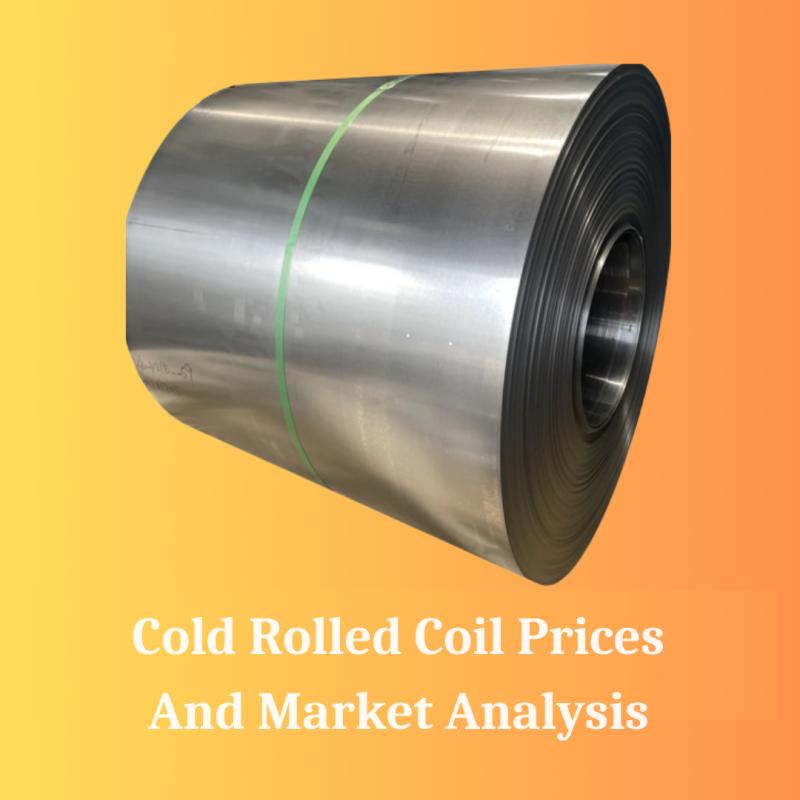What to Expect from Cold Rolled Coil Prices in 2025: Trends and Market Insights

The global steel industry is constantly evolving, and one of
the key players in this market is cold rolled coil (CRC), a product used in
various industries, from automotive to construction. With the start of 2025,
many are wondering how cold rolled coil prices will behave this year.
Understanding the factors influencing the price of cold rolled coil can help
businesses and consumers navigate the market with greater confidence.
Cold rolled coil prices have always been affected by several
variables, including global demand, raw material costs, energy prices, and
trade policies. As we look toward 2025, the cold rolled coil market is expected
to face both challenges and opportunities that will impact pricing trends.
>> Get Real-time Cold Rolled Coil Market Prices,
trends, forecast and market analysis: https://tinyurl.com/2wmppd7w
Global Demand and Production Trends
Cold rolled coil is a crucial raw material for a wide range
of products. As industries worldwide continue to recover from the disruptions
caused by the pandemic, demand for steel products, including cold rolled coil,
is expected to rise. The automotive sector is one of the largest consumers of
CRC, as it is used in manufacturing car bodies and components. With electric
vehicles (EVs) becoming more popular, the demand for lighter and stronger
materials like cold rolled coil will likely increase.
The construction industry is another major factor
contributing to the demand for cold rolled coil. As urbanization continues in
developing nations, and infrastructure projects take off in various parts of
the world, the need for steel in construction will remain robust. This uptick
in demand from key sectors is expected to put upward pressure on prices.
Raw Material Costs and Energy Prices
The price of cold rolled
coil is also heavily influenced by the costs of raw materials, particularly
iron ore and scrap metal. In 2025, any fluctuations in the prices of these raw
materials will directly impact the production cost of CRC. With iron ore being
a major component in steel production, price hikes in this material can trigger
higher cold rolled coil prices.
Energy prices, particularly for electricity and natural gas,
are also critical factors. Steel production is an energy-intensive process, and
any increase in energy costs can result in higher manufacturing expenses. As
energy markets remain volatile, this could translate into price increases for
cold rolled coil in 2025.
Geopolitical Factors and Trade Policies
Geopolitical tensions and trade policies have always played
a significant role in shaping steel prices. In 2025, the global steel market is
likely to be affected by changes in trade tariffs, import/export regulations,
and potential trade agreements. For instance, countries like China and India,
who are both major producers and consumers of steel, have the power to impact
global pricing trends.
Additionally, trade barriers or tariffs imposed by
governments can disrupt the supply chain and lead to price fluctuations. These
factors could result in price instability for cold rolled coil, making it
important for industry players to stay informed about potential regulatory
changes.
Market Size and Forecasts for 2025
The steel market, including cold rolled coil, is projected
to continue growing over the next few years, though at a slower pace than
during the post-pandemic recovery boom. According to industry analysts, global
demand for cold rolled coil is expected to rise by a modest percentage in 2025,
driven by construction and automotive industries, particularly in emerging
markets. However, growth may be somewhat limited by the ongoing challenges of
supply chain disruptions and the rising cost of raw materials.
While some analysts predict price hikes for cold rolled coil
in 2025, the extent of these increases will depend on several key factors. It
is expected that prices will remain relatively stable for the first half of the
year, with minor fluctuations based on seasonal demand and production cycles.
However, as the year progresses, the potential for price hikes due to raw
material shortages, increased demand, or geopolitical factors cannot be ruled
out.
Looking ahead, the price of cold rolled coil in 2025 will
likely see moderate increases due to a combination of rising global demand,
higher raw material costs, and energy price fluctuations. Industries that rely
on cold rolled coil should prepare for some price volatility and take strategic
measures to mitigate costs, such as securing long-term supply agreements or
exploring alternative materials.
While the market is expected to remain relatively stable in
the early months of 2025, it's essential to keep an eye on the key trends
shaping the global steel industry. Get real time commodity price update with pricewatch. By understanding the factors
at play, businesses can better navigate the pricing landscape and make informed
decisions about procurement strategies.
Post Your Ad Here
Comments